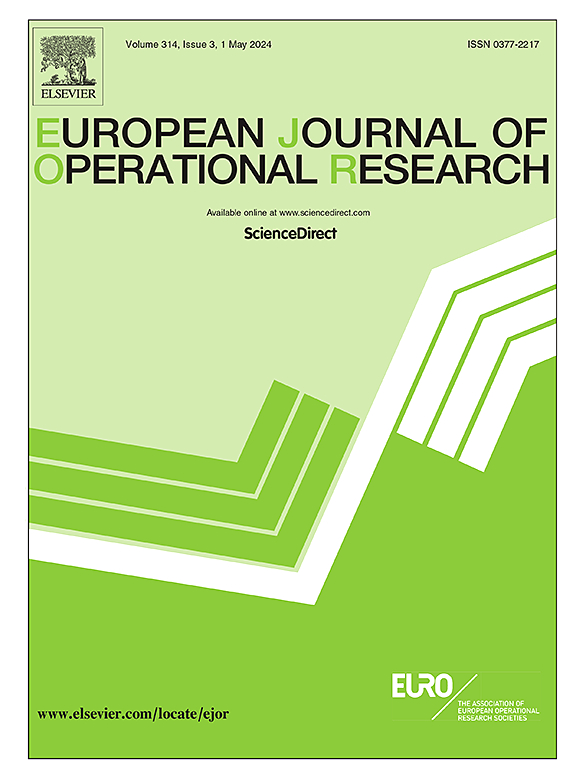A two-echelon multi-trip vehicle routing problem with synchronization for an integrated water- and land-based transportation system
IF 6
2区 管理学
Q1 OPERATIONS RESEARCH & MANAGEMENT SCIENCE
引用次数: 0
Abstract
This study focuses on two-echelon synchronized logistics problems in the context of integrated water- and land-based transportation (IWLT) systems. The aim is to meet the increasing demand in city logistics as a result of the growth in transport activities, including parcel delivery, food delivery, and waste collection. We propose two models, a novel mixed integer linear joint model, and a logic-based Benders’ decomposition (LBBD) model, for a two-echelon problem under realistic settings such as multi-trips, time windows, and synchronization at the satellites with no storage and limited resource capacities. The objective is to optimize transfers and satellite assignments, thereby reducing overall logistics costs for street vehicles and vessels. Computational experiments demonstrate that the LBBD model is more robust in terms of solution quality and solution time on average while the added value of the LBBD is more evident when solving large-scale instances with 100 customers, reducing the overall costs by 10.6% on average and significantly reducing the fleet costs on both networks. Furthermore, we assess the effect of changing cost parameters and satellite locations in the proposed IWLT system–analyzing system behavior and suggesting potential improvements–and evaluate several system alternatives in city logistics–consisting of different transportation network designs (single- and two-echelon), vehicle types, and operational constraints. On average, the proposed two-echelon IWLT system reduces the number of kilometers traveled by vehicles at street level by ranging from 20% to 30% compared to a typical single-echelon service design that relies solely on trucks.
水陆联运系统的双梯队多行程车辆同步路由问题
本研究的重点是水陆综合运输系统(IWLT)中的双梯队同步物流问题。目的是满足因运输活动(包括包裹递送、食品递送和垃圾收集)增长而日益增长的城市物流需求。我们提出了两个模型,一个是新颖的混合整数线性联合模型,另一个是基于逻辑的本德斯分解(LBBD)模型,用于解决在多趟行程、时间窗口和卫星同步等现实环境下,无存储空间且资源容量有限的双主线问题。目标是优化转运和卫星分配,从而降低街道车辆和船只的总体物流成本。计算实验表明,LBBD 模型在求解质量和平均求解时间方面更为稳健,而在求解 100 个客户的大规模实例时,LBBD 的附加值更为明显,平均降低了 10.6% 的总体成本,并显著降低了两个网络的车队成本。此外,我们还评估了在拟议的 IWLT 系统中改变成本参数和卫星位置的效果--分析系统行为并提出潜在的改进建议--并评估了城市物流中的几种系统替代方案--包括不同的运输网络设计(单梯队和双梯队)、车辆类型和操作约束。与单纯依靠卡车的典型单货柜服务设计相比,拟议的双货柜 IWLT 系统平均减少了街道车辆行驶公里数的 20% 至 30%。
本文章由计算机程序翻译,如有差异,请以英文原文为准。
求助全文
约1分钟内获得全文
求助全文
来源期刊

European Journal of Operational Research
管理科学-运筹学与管理科学
CiteScore
11.90
自引率
9.40%
发文量
786
审稿时长
8.2 months
期刊介绍:
The European Journal of Operational Research (EJOR) publishes high quality, original papers that contribute to the methodology of operational research (OR) and to the practice of decision making.
 求助内容:
求助内容: 应助结果提醒方式:
应助结果提醒方式:


